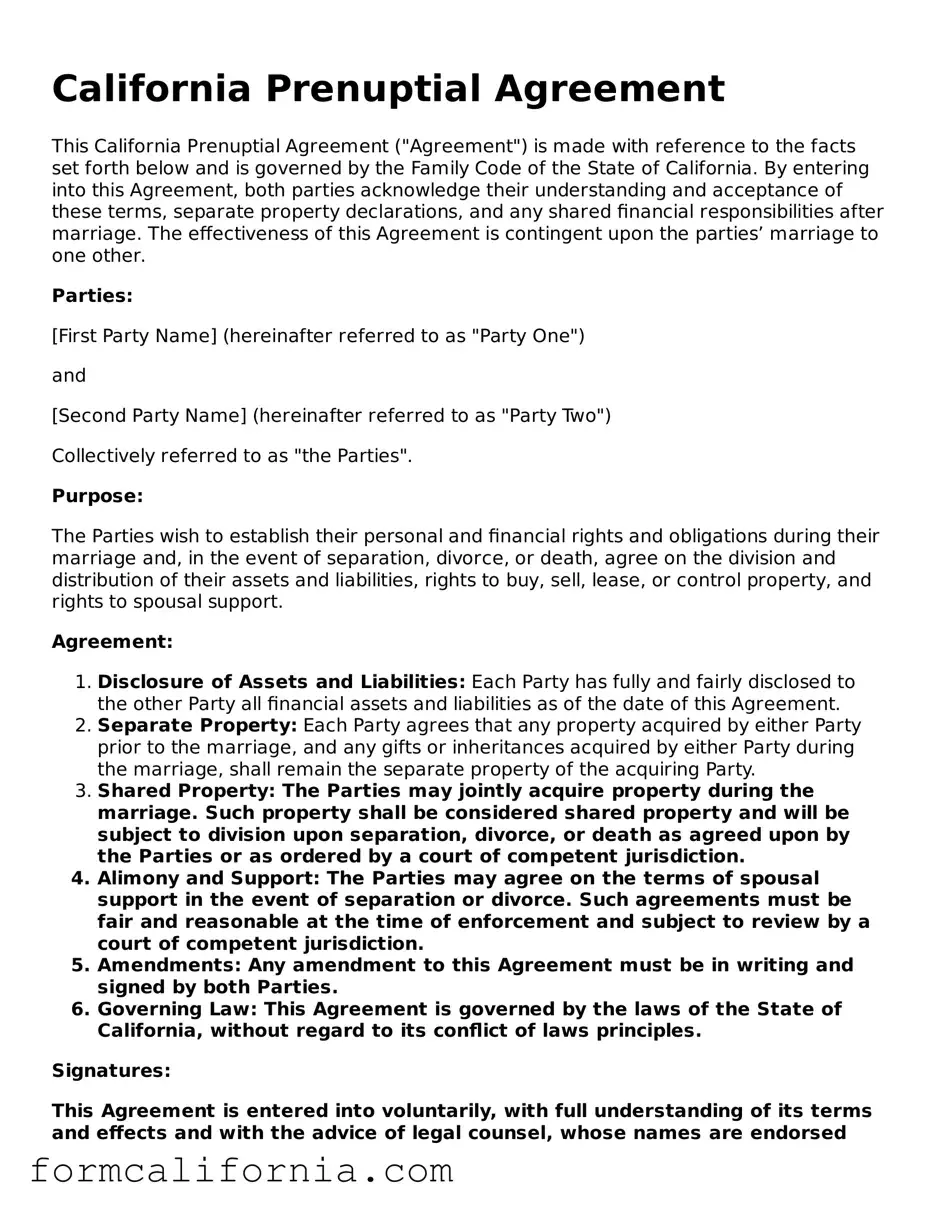A California Prenuptial Agreement form shares similarities with a range of documents that both precede and follow significant life events, particularly those entailing legal, financial, or partnership commitments. Each document, while distinct in purpose, overlaps in their goal to delineate rights, responsibilities, and expectations among parties.
One such document is the Postnuptial Agreement. Like its pre-marital counterpart, it outlines how assets and debts should be handled during the marriage or in the event of divorce or death. However, the key difference lies in the timing; postnuptial agreements are drawn up after the marriage has taken place, reflecting changes that may have occurred since the wedding.
Another related document is a Cohabitation Agreement, utilized by unmarried couples who live together. It serves a similar purpose in determining the ownership and division of assets and liabilities but is designed for those without a legal marriage. This agreement helps avoid potential disputes should the relationship end or one partner pass away.
The Last Will and Testament also bears resemblance, as it specifies asset distribution upon one’s death. Although it isn't limited to marital assets, it often includes provisions affected by prenuptial agreements, ensuring that personal wishes are honored in conjunction with previously agreed terms between spouses.
Partnership Agreements, used in business scenarios, outline the workings between business partners, similar to how a prenuptial agreement delineates the parameters of the marital partnership. Both aim to preemptively solve disputes regarding asset division, responsibilities, and decision-making processes.
Financial Affidavits, though generally used within the domain of legal proceedings like divorce or child support cases, share the detailed disclosure aspect of prenuptial agreements. They necessitate a full declaration of assets and liabilities to ensure fair and informed agreements are made.
A Separation Agreement, initiated when couples decide to live apart but remain legally married, closely mirrors a prenuptial agreement’s focus on the division of assets, debts, and other marital responsibilities during the separation period and potentially post-divorce.
The Buy-sell Agreement, prevalent in the context of business, is designed to determine what happens with a business share upon the occurrence of certain events, such as the death of a partner. Its essence parallels that of prenuptial agreements in managing changes in partnership dynamics, albeit in a business setting.
Lastly, Living Trusts share the premarital document's aim of asset management and distribution, allowing individuals to specify how their assets are handled during their lifetime and after death. This ensures assets are distributed directly to beneficiaries without the need for probate, similarly to how prenuptial agreements can circumvent probate disputes over marital property.
Each of these legal documents, while serving their unique purposes, intersects with the principles of a California Prenuptial Agreement in fundamental ways, highlighting the vast network of agreements and contracts that manage personal, financial, and business relations in society.
